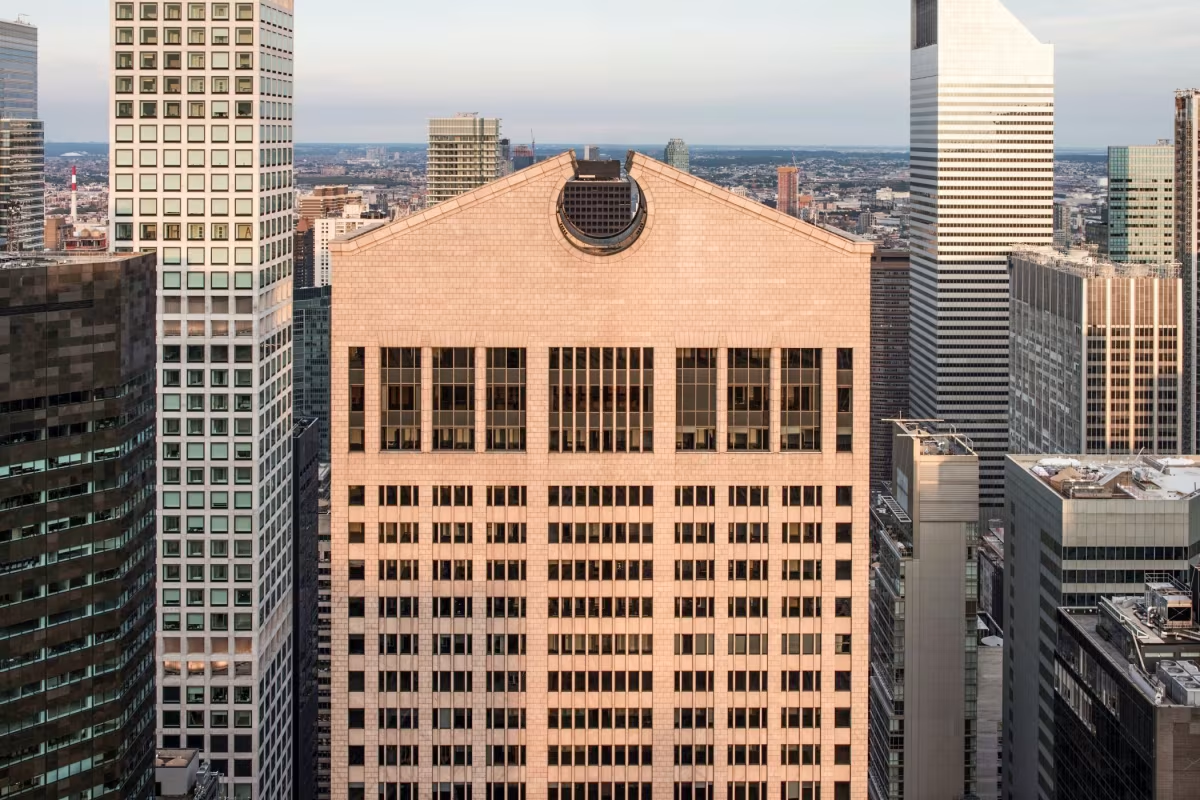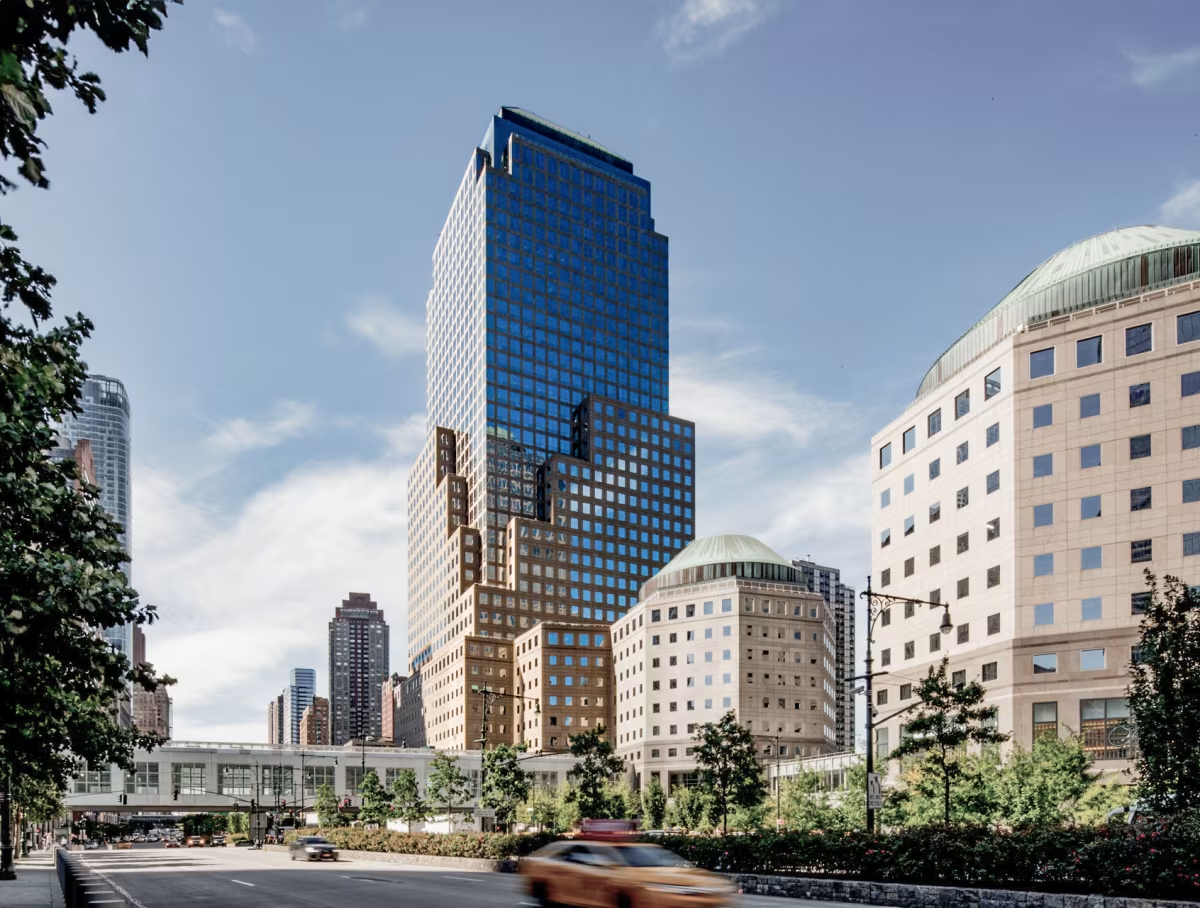550 Madison Avenue vs 200 Liberty Street Building


Comparing the 550 Madison Avenue and the 200 Liberty Street Building is interesting because they both stand in New York, NY, and were completed within 2 years of each other, but they were designed by different architects.
This offers a unique glimpse at how rival designers approached projects in the same city during the same era.
Height & Size
These two towers present an interesting contrast in their proportions. The 550 Madison Avenue rises higher at 646ft (197m), while the 200 Liberty Street Building reaches 577ft (176m). However, the 200 Liberty Street Building accommodates more floors with 40 levels above ground, compared to 37 floors in the 550 Madison Avenue.
This suggests different approaches to interior space design. The 550 Madison Avenue has an average floor-to-floor height of approximately 5.3m, while the 200 Liberty Street Building has more compact floors averaging around 4.4m each. The taller building's more generous floor heights might indicate grander interior spaces, higher ceilings, or different programmatic requirements.
These different proportions likely reflect the specific needs each building was designed to serve, whether driven by zoning regulations, client requirements, or the intended use of the spaces within. The contrast shows how architects can achieve different spatial experiences even when working with similar overall building scales.
Architectural Style
Both the 550 Madison Avenue and the 200 Liberty Street Building were designed in line with the aesthetic conventions of the Postmodernism style.
At the time, this style was at the height of its popularity. So both Johnson/Burgee Architects and Cesar Pelli & Associates followed what was in many ways expected of them, producing designs that fit comfortably within contemporary architectural norms, rather than breaking with convention.
Uses
Both the 550 Madison Avenue and the 200 Liberty Street Building were designed to serve as commercial towers, and that has remained their main use since their completion, serving similar roles in the urban fabric.
Both towers provide significant parking capacity, with 550 Madison Avenue offering 20 spaces and the 200 Liberty Street Building offering 232.
Structure & Facade
Both towers share the same structural solution, a Frame system.
A frame structure uses a grid of columns and beams to carry the building's loads. This frees the walls from structural duties, allowing for flexible floor plans and larger windows.
However, when it comes to the facade, both buildings use different approaches. The 550 Madison Avenue uses a Modular facade, while the 200 Liberty Street Building uses a Curtain Wall facade.
A Modular facade like the one seen in the 550 Madison Avenue employs prefabricated panels, often mixing solid surfaces with smaller windows, while a curtain-wall facade like the one seen in the 200 Liberty Street Building uses a lightweight glass curtain wall hung from the structure.
| 550 Madison Avenue | 200 Liberty Street Building | |
|---|---|---|
| Johnson/Burgee Architects | Architect | Cesar Pelli & Associates |
| 1981 | Construction Started | 1984 |
| 1984 | Year Completed | 1986 |
| Postmodernism | Architectural Style | Postmodernism |
| Commercial | Current Use | Commercial |
| 37 | Floors Above Ground | 40 |
| 197 m | Height (m) | 176 m |
| 63,650 m² | Usable Area (m²) | 151,200 m² |
| 25 | Number of Elevators | 23 |
| Frame | Structure Type | Frame |
| Steel | Vertical Structure Material | Steel |
| Concrete And Steel | Horizontal Structure Material | Concrete And Steel |
| Yes | Facade Structural? | No |
| Granite, Glass | Main Facade Material | Aluminum, Glass, Granite |
| William Crow Construction, And HRH Construction | Main Contractor | Olympia & York Battery Park Company |
| Cosentini Associates | MEP Engineer | WSP Flack + Kurtz |
| Leslie E. Robertson Associates | Structural Engineer | M.S. Yolles & Partners |
| NY | State | NY |
| New York | City | New York |
| 550 Madison Avenue | Address | 200 Liberty Street |